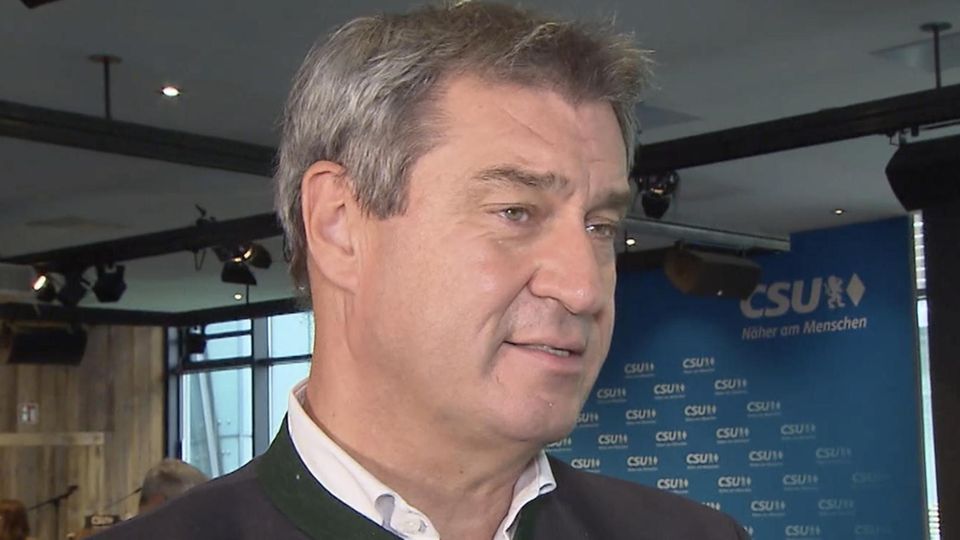questions and answers
Are border controls now being expanded? And what would that bring?
Border control near the border triangle of Germany, Poland and the Czech Republic: A police officer from the Czech Republic (l.) and a federal police officer stop a car (archive photo)
© Robert Michael / DPA
Are the stationary border controls coming or not coming? Even at the traffic lights, some were a bit perplexed by the ambiguous signals coming from the Interior Ministry. The most important questions and answers:
In recent months, more asylum seekers have been arriving, especially via the Czech Republic and Poland, but also on other routes Germany. Between the beginning of January and the end of August, more than 204,000 people applied for asylum in Germany for the first time. Many of them come from countries such as Syria or Afghanistan, whose citizens can usually claim protection in the European Union. To ensure that the proportion of those who apply for asylum in Germany does not increase any further, some domestic politicians at the federal and state levels have been calling for stationary controls at the borders with the Czech Republic and Poland for weeks. Federal Interior Minister Nancy Faeser (SPD) does not think this makes sense so far. As of now, she probably wants to take a different path.
The most important questions and answers:
Are stationary controls at the borders now coming?
No. Such controls directly at the border, which must be applied for to the EU Commission, have been in place in Bavaria on the border with Austria since 2015. The Federal Minister of the Interior does not yet want to submit such an application for other border sections. Instead, it is planning increased controls near the border and takes the legal opinion that the federal police can stop vehicles directly at the border at certain points – for example if there is a suspicion of smuggling there. Faeser also wants more joint patrols with Poland and the Czech Republic.
What are the advantages of inpatient checks?
This makes smugglers easier to catch because they have often already disappeared during checks across the border by the time the police pick up the people who have entered the country irregularly. Rejections at Schengen internal borders are only legally permissible if the temporary reintroduction of border controls has previously been notified to the EU Commission. However, rejections are only used in relatively few cases, for example if a foreigner is banned from entering the country or does not apply for asylum.
How often do rejections actually occur?
According to the federal government, 4,489 people were turned back at the border checkpoints on the German-Austrian land border in the first half of 2023. During the same period, 4,787 foreigners were turned back at the German-Swiss land border, where the federal police are allowed to check trains on Swiss territory in accordance with an agreement with Bern, primarily because they could not produce valid travel documents.
Migration 2023
Most refugees come to Germany from these countries
What speaks against stationary border controls?
They retain a lot of staff. Experience has shown that if controls are increased at one point, unauthorized entries increase after a while at another section of the border because the people who want to go to Germany and their smugglers have adjusted to this. Furthermore, once such controls have been introduced, it is often difficult to find an exit. This can easily seem like a signal that a state wants to relax its regulations with regard to irregular migration. This is shown by the example of the controls in Bavaria. They were first applied for in autumn 2015 – at that time the Federal Minister of the Interior was still called Thomas de Maizière and came from the CDU. Since then they have been extended again and again – including by Nancy Faeser. This particularly annoys the Greens, who generally consider such controls to be wrong.
Where else in the EU are there currently inpatient checks?
Although the principle of open internal borders actually applies in the Schengen area, there are currently several states that have drawn this card. Spain, for example, announced controls for a few days from September 28th and justified this with security precautions around the informal meeting of heads of state and government in Granada. Norway is currently checking ports with ferry connections to Schengen states and justifies this with risks to critical infrastructure on land and in the sea area as well as the danger from Russian secret service activities. Denmark cites several reasons for its controls on the land border with Germany, including organized crime, irregular migration and the threat of Islamist terror. Austria has notified border controls for some sections, Sweden for all internal borders. France has also requested controls at its borders with Belgium, Luxembourg, Germany, Italy, Spain and Switzerland, citing terror risks and irregular migration via the central Mediterranean route and the so-called Balkan route. However, the French do not check everywhere around the clock, but rather selectively and according to the situation.

What do the unions say?
The German Police Union is campaigning for stationary checks. The police union (GdP), on the other hand, considers the French model to be better. “We recently had twelve hundred riot police at the internal borders and in the border area,” says Andreas Roßkopf, chairman of the GdP Federal Police District. Two more hundreds were added on Tuesday. This means that the load limit has been reached. He is convinced that comprehensive stationary controls on the eastern border could only be carried out for a few weeks in terms of personnel.


